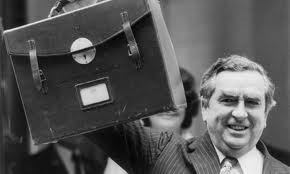
The 1976 IMF debacle in the UK was a defining moment when the promotion of full employment ended. Fundamentally though it was a political mistake by people who didn’t understand that floating the UK pound fundamentally changed how it behaved.
The government was terrified about a ‘run on the pound’ and wanted to keep an exchange rate of $2 to the £. The panic set in with it got to $1.80. Of course since then the £ has been down to near parity with the dollar at one point and the world didn’t end.
It’s important to remember that throughout the Bretton Woods era the UK had made frequent use of the IMF facilities to keep the pound in it range. And that is what the UK government wanted to do in 1975 and 1976 using the same old fashioned techniques. But to do that you have to have sufficient foreign exchange reserves. Providing those is what the IMF did throughout Bretton Woods, and did again in 1976.
The difference was the size of the loan - the biggest ever at that point - and the fact that previous drawings had been cleared by that time. Politically it was a huge win for the opponents of the Labour approach to government.
What is amusing is that using fixed exchange rate thinking with floating rate currency areas is still the problem today.
The nature of the loan is described in this document dated 15th December 1976 and the appropriate section is reproduced below.
The government of the United Kingdom hereby requests of the International Monetary Fund a stand-by arrangement under which for a period of two years the Government of the United Kingdom will have the right to purchase from the Fund currencies of other members in exchange for sterling up to an amount equivalent to SDR 3,360 million. Before making purchases under the stand-by arrangement, the Government will consult with the Managing Director on the particular currencies to be purchased from the Fund.
The purpose of this request is to support the policies that have been adopted by the Government of the United Kingdom to strengthen the balance of payments and create the conditions in which it will be possible to get both unemployment and domestic inflation down from the present unacceptable levels and keep them down. The stand-by arrangement will also help to repay external debt now falling due and assist in maintaining orderly conditions in the exchange market for sterling. …
First Published 16-Sep-2016